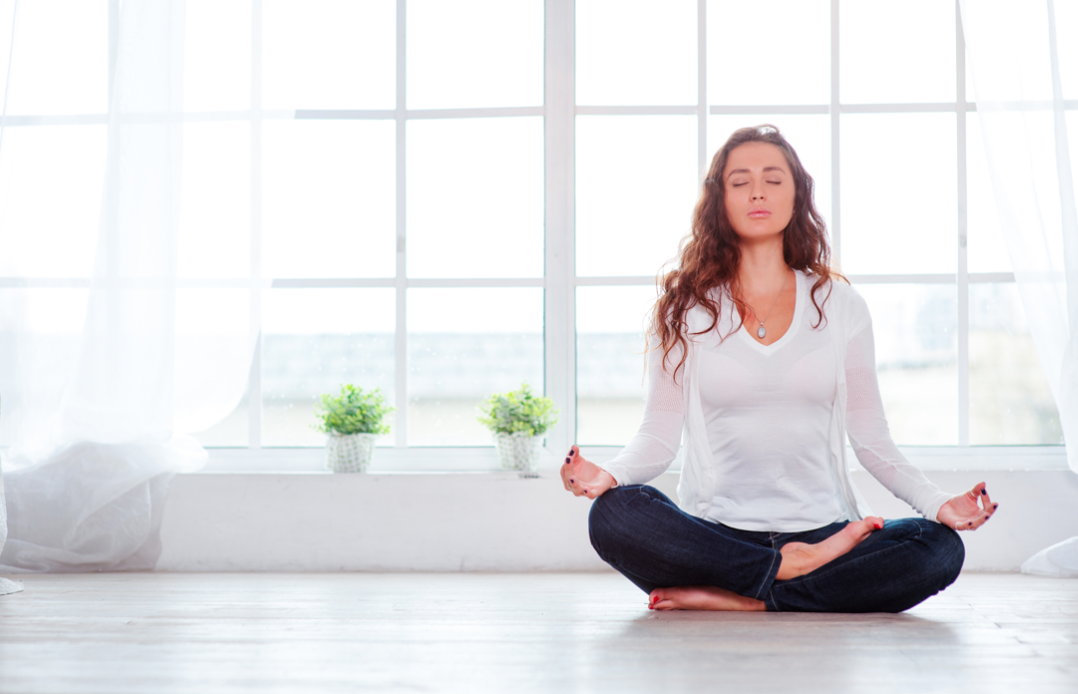Time flies when you’re in the flow. And before you know it, you’ve been sitting at your comfy co-working spot for hours! Even though your mind feels like it can time travel without a problem, your body definitely starts to feel it. Hours spent in the same slouched or other posture-compromising position starts to take it’s toll on us. It’s as if our bodies cozy up a little too much with the whole ‘path of least resistance’ thing and forget that a range of motion is necessary to keep us at optimal health and comfort. Here are a few seated stretches you can do to stay limber enough to see your projects through to the end! And not look weird in the process.
1.The “Who else is here?” Stretch- This can be your go-to to release tension in your spine and lower back without encouraging funny looks from coworkers. What? You’re just looking around at who else has come in since you opened up the place hours ago.
- Sit on the edge of your chair with feet on the floor.
- Place your right hand on your left knee and grab the chair back with your left hand.
- Gently twist toward the chair and hold for a few breaths.
- Return to center and switch sides.
2. “I just rocked that section!” Stretch- Take a mid-afternoon refresher to stretch your shoulders, triceps, chest and hands.
- Sit with your legs hip width apart and feet flat on the floor.
- Clasp hands in front of you, interlocking your fingers. Stay here for a few breaths
- Turn your palms outward and raise straight over your head.
- Bend slowly to the left and hold for two breaths before repeating on the right side.
- Continue alternating for one minute.
3. “That was such a great idea I just thought of!” Stretch- This one will help you create that deep stretch your neck is craving. For best results, visualize your neck lengthening and the muscles along your vertebrae relaxing.
- Sit with your legs hip width apart and feet flat on the floor.
- Reach over your head and place your right hand on the left side of your head to gently pull your neck away from your shoulders.
- At the same time, hold firmly onto the chair with your left hand to draw your left shoulder away from your neck.
- Hold the pose for at least five more breaths, then release your left hand from the chair and gently massage your neck and shoulders with your left hand.
- Slowly lift the head and switch sides to repeat the sequence.
4. “Okay, so this is how I do it” Stretch- The way we sit for extended periods of time really takes a toll on our bodies. Crossing our legs while seated, especially when done on one side more than the other, can create imbalances in our hips and lower spine. Bring balance back and keep those hip flexors flexible with this stretch.
- Sit with your legs hip width apart and feet flat on the floor.
- Cross your right leg over the left at a 90-degree angle and let it drop toward the ground as much as it can.
- Keep your the foot flexed as to not place pressure on the knee.
- Distribute equal weight between the sitting bones while staying in an upright seated position.
- You should feel a gentle to moderate stretch on the outermost part of the right thigh.
- Hold 5 to 10 breaths before switching sides.
5. “What project should I crush next? Stretch- With this one, breathe deeply while stretching out your shoulders, back, chest, and hands.
- Sit with your legs hip width apart and feet flat on the floor.
- Interlace your fingers in front of you.
- Inhale and stretch your arms straight over your head.
- lower your hands to behind your head on an exhale.
- With your clasped hands behind your head, take three breaths as you gently stretch your elbows back until you feel the stretch.
- Inhale and raise above your head, keeping fingers interlaced.
- Unlace your hands and lower your hands to your sides on an exhale.
Try incorporating some of these each day so when a powder day comes, you’re ready! What are some of the things you do to help during those long days at your computer?










